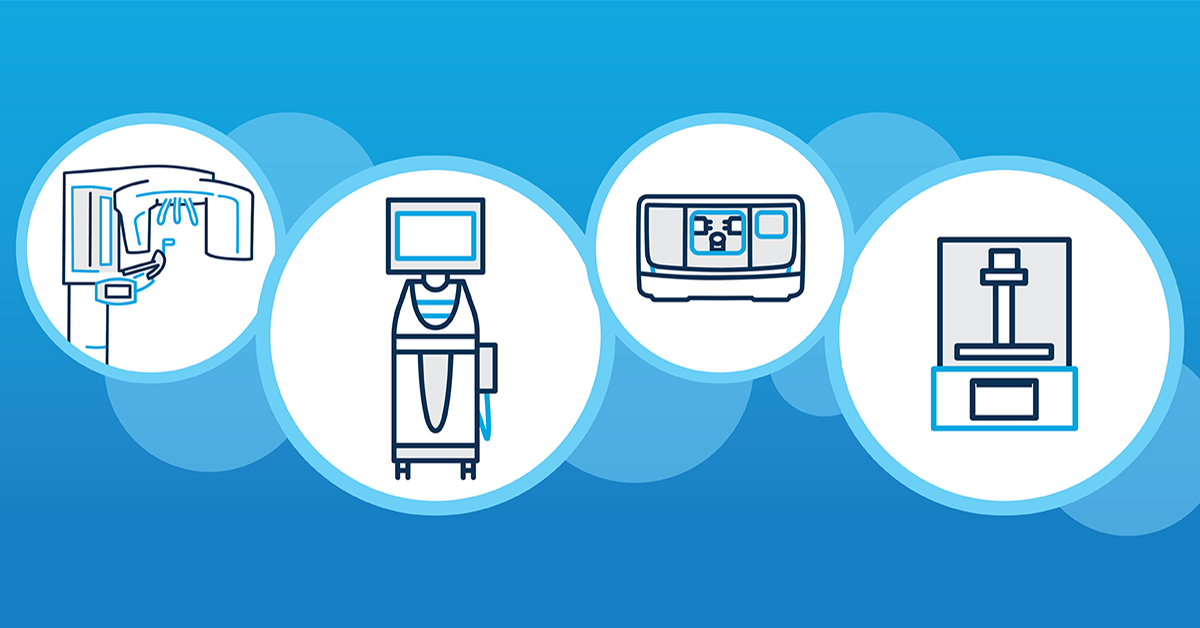On their own, 3D cone beam computed tomography (CBCT) and CAD/CAM solutions are powerful tools. Put them together and you can elevate your practice and patient experience to a whole new level.
Take implants, for example. Kirsten Andrews, DDS, owner of Johnson Family Dentistry in Devils Lake, N.D., has experienced firsthand how the technology comes together to significantly improve these procedures at her practice. “I honestly can’t imagine planning an implant without the technology. I feel like it’s like telling someone to drive at night without their headlights on if you don’t have it. You feel that blinded,” she says.
How CBCT and CAD/CAM work together
CBCT allows you to capture the human jaw in 3D and visualize bone structure, tooth position, soft tissues and nerve pathways in detail. It provides so much more information than 2D imaging. “If you’re planning an implant only from a 2D image, you are losing so much information. That’s what produces that blinded feeling.”
The digital intraoral scanner allows you to scan your patient’s mouth instead of using analog impressions and plan for the restoration that will replace a missing tooth, accounting for how it will sit in relation to the other teeth. Combining the 3D rendering from the digital scanner with the 3D model from the CBCT offers high precision in determining the best placement of the implant along with the right size and shape of the crown.
By using a dental mill or 3D printer as part of a full CAD/CAM solution, you can take the information from the scanner and CBCT and create a guide for implant surgeries that is highly accurate while saving on lab costs. The guide helps set the procedure up for success to ensure the implant is placed in the best location possible.
Finally, creating the restoration in-house with a dental mill in the same visit can reduce the number of appointments needed to complete the procedure, increasing convenience for the patient. “Just the other day, I delivered an implant and then milled a temporary crown in one visit. What typically would have been four, maybe five visits, I can bring down to two visits and maybe three at the most,” Andrews says.
Greater confidence and better clinical outcomes with CBCT combined with CAD/CAM solutions
The power of CBCT combined with CAD/CAM solutions is the predictability it offers in planning where the implant is going and consistently achieving the outcome you’re aiming for with great accuracy, Andrews says.
“Whether it’s several implants and then giving the patient an appliance, or whether it’s a denture or a partial, it’s a nightmare if you haven’t planned those implants to be in the perfect position. Everything put on that implant could have potential issues,” she says.
The CBCT imaging and digital scanner allows for precise planning ahead of the surgery for the implant length, width and placement in relation to the bone, nerves and teeth. This means you can identify and address potential issues and problems ahead of time for a smoother, faster surgery.
A better patient experience with CBCT and CAD/CAM
The predictability provided by CBCT and CAD/CAM leads to a better experience for patients, too. Because of the accuracy the technology allows, Andrews says she now can make a tiny incision into the patient’s mouth to place the implant.
“For a lot of my patients where I’m placing the dental implants now, the surgery is so minor. They will make the comment that getting the tooth extracted is actually worse than getting the dental implant,” she shared. “Their recovery is so simple and painless that patients are going back to work the minute they leave my office.” She hears positive feedback from patients. “What we hear over and over again is, ‘That is so impressive. Dentistry has come a long way. Wow – that was almost painless.’”
Visit our equipment and technology page or speak with your Patterson Dental representative to learn more about digital imaging and CAD/CAM solutions.
– – –



